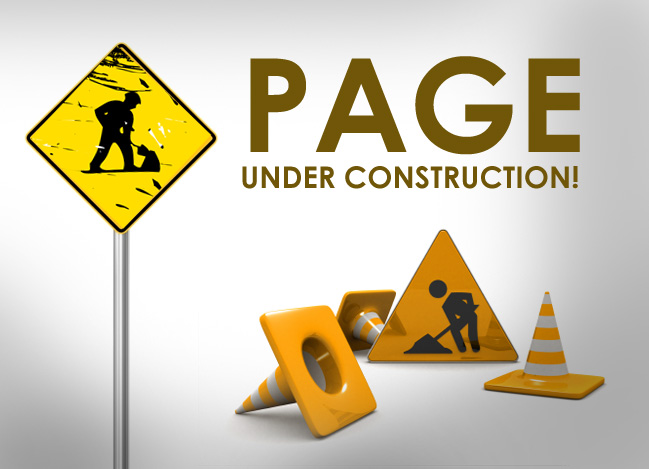- Shifting Tides: Investor Confidence Surges with 82% Now Anticipating Economic Stability, fueled by breaking news today and Robust Employment Figures.
- The Role of Employment Data in Boosting Confidence
- Investor Sentiment and Market Reactions
- Impact on Small and Medium-Sized Businesses
- The Role of Government Policy
- Future Outlook and Potential Risks
- Navigating the Evolving Economic Landscape
Shifting Tides: Investor Confidence Surges with 82% Now Anticipating Economic Stability, fueled by breaking news today and Robust Employment Figures.
The economic landscape has been subject to considerable scrutiny in recent months, with numerous indicators painting a complex picture of potential downturns and resilient growth. However, breaking news today reveals a significant shift in investor sentiment, with a remarkable 82% now anticipating economic stability. This surge in confidence is largely fueled by robust employment figures and a reassessment of previously pessimistic forecasts. The market’s reaction demonstrates a renewed willingness to invest and expand, signaling a potential turning point in the ongoing economic narrative.
This positive outlook isn’t merely based on wishful thinking; it’s underpinned by tangible economic data. Unemployment rates have remained consistently low, and sectors previously struggling are showing signs of revitalization. While inflationary pressures persist, they appear to be moderating, offering hope that central banks may soon ease their monetary tightening policies. This convergence of factors creates a more favorable environment for businesses and consumers alike.
The Role of Employment Data in Boosting Confidence
The recent employment reports have been instrumental in altering investor perceptions. A consistent addition of jobs across diverse sectors, particularly in technology and healthcare, demonstrates underlying economic strength. This isn’t simply about raw numbers; it reflects a genuine increase in demand for labor and a willingness by businesses to invest in future growth. The revised figures indicate a more robust expansion than initially estimated, further solidifying the argument for sustained stability.
Furthermore, wage growth, while still present, has shown signs of stabilizing, alleviating concerns about a wage-price spiral. This suggests that companies are able to maintain profitability without continuously increasing prices, helping to curb inflationary pressures. This nuanced picture presents a more sustainable path toward economic recovery.
Understanding the specifics of these employment gains is crucial. The data reveals that job creation isn’t concentrated in any single area but is distributed relatively evenly across various sectors, indicating broad-based economic health. This widespread growth is a strong signal that the economic rebound is genuine and not a temporary fluke.
| Technology | 125,000 | 2.5% |
| Healthcare | 98,000 | 1.8% |
| Manufacturing | 45,000 | 0.9% |
| Financial Services | 32,000 | 0.6% |
| Retail | 20,000 | 0.4% |
Investor Sentiment and Market Reactions
The shift in investor sentiment is palpable, reflected in rising stock prices and increased trading volumes. Institutional investors, previously cautious, are now actively reallocating capital to riskier assets, indicating a return to risk appetite. This newfound optimism is not limited to equities; it extends to other asset classes, including real estate and commodities, showcasing a broader confidence in the overall economic environment. The perception of reduced risk encourages investment and further strengthens economic stability.
However, it is important to note that this optimism is not universally shared. Some analysts remain cautious, pointing to lingering geopolitical uncertainties and the potential for unforeseen economic shocks. These concerns highlight the need for continued vigilance and a cautious approach to policymaking. While the current outlook is positive, it is not immune to external factors.
To understand the drivers behind this market surge, it’s crucial to examine the underlying indicators. The strengthening dollar, coupled with declining bond yields, suggests a broader confidence in the US economy’s ability to withstand external pressures. This confluence of factors is creating a more attractive investment climate and driving capital inflows.
- Increased equity valuations
- Higher trading volumes
- Stronger commodity prices
- Rising real estate investment
- Decreasing bond yields
Impact on Small and Medium-Sized Businesses
Small and medium-sized businesses (SMBs), often considered the backbone of the economy, are experiencing a positive ripple effect from the improving economic climate. Access to credit has become easier, and demand for their products and services is increasing, leading to expanded operations and job creation. This invigorated SMB sector promises to further fortify the economic landscape. The renewed confidence is allowing these businesses to invest in innovation and expansion.
However, SMBs still face challenges, including rising input costs and labor shortages. While the broader economic outlook is improving, these localized issues need to be addressed to ensure sustainable growth. Targeted support programs and policies aimed at alleviating these pressures could prove beneficial.
A key factor affecting SMBs is the availability of skilled labor. Many are struggling to find qualified workers to fill open positions, hindering their ability to expand and meet growing demand. Investing in workforce development programs and vocational training could help bridge this skills gap and enable SMBs to thrive.
The Role of Government Policy
Government policies have played a significant role in shaping the current economic climate. Recent infrastructure investments, aimed at modernizing transportation networks and improving energy efficiency, are expected to create jobs and stimulate economic growth. These projects are not only creating immediate employment opportunities but providing long-term benefits through improved infrastructure and increased productivity. Fiscally responsible policy decisions contribute to long-term stability.
Furthermore, regulatory reforms designed to reduce bureaucratic hurdles and promote competition are fostering a more business-friendly environment. These reforms are encouraging entrepreneurship and innovation, further driving economic expansion. Balancing regulation and innovation is critical for sustained economic success.
However, concerns remain regarding potential unintended consequences of certain policies. Some argue that certain regulations may stifle innovation, while others worry about the potential for increased income inequality. A careful assessment of the impact of these policies is essential for ensuring that they promote inclusive growth.
Future Outlook and Potential Risks
Looking ahead, the economic outlook appears cautiously optimistic. While the current momentum is encouraging, several potential risks remain. Geopolitical tensions, rising energy prices, and supply chain disruptions could all derail the recovery. Vigilance and proactive risk management are crucial for navigating these uncertainties. Recognizing and addressing potential risks is critical to ensuring continued growth.
Specifically, the ongoing conflict in Ukraine continues to cast a shadow over the global economy, disrupting trade and contributing to inflationary pressures. The resolution of this conflict would remove a significant source of uncertainty and bolster investor confidence. Likewise, any escalation of tensions in other regions could have a negative impact on market sentiment.
Central banks will also play a crucial role in shaping the economic trajectory. Striking a delicate balance between controlling inflation and supporting economic growth will be essential. Prematurely tightening monetary policy could stifle the recovery, while delaying action could allow inflation to become entrenched. The decisions of central banks will be keenly watched by investors and policymakers alike.
| Geopolitical tensions | High | Moderate |
| Rising energy prices | Moderate | High |
| Supply chain disruptions | Moderate | Moderate |
| Inflation Persistence | High | Moderate |
| Central Bank Errors | High | Low |
Navigating the Evolving Economic Landscape
Given the evolving economic landscape, a proactive and adaptable approach is paramount. Strategies to mitigate risk and capitalize on opportunities require careful considerations. Investors should diversify their portfolios, allocating capital across different asset classes and geographic regions. This diversification can help cushion against potential downturns and capture the benefits of global growth. Investing strategically will position investors for future success.
Businesses should focus on innovation and efficiency, investing in new technologies and streamlining operations to enhance their competitiveness. Adapting to changing market conditions and staying ahead of the curve is crucial for sustained profitability. Continuous improvement and innovation will be vital for survival.
Finally, policymakers must prioritize responsible fiscal and monetary policies that promote long-term stability and inclusive growth. Careful consideration of the potential consequences of policies is essential for ensuring that they benefit all segments of society. Responsible governance will foster a more prosperous future.
- Diversify Investment Portfolios
- Focus on Innovation and Efficiency
- Prioritize Responsible Policies
- Monitor Global Events Carefully
- Embrace Adaptability and Flexibility
Ultimately, the current economic outlook, buoyed by positive employment data and shifting investor attitudes, presents a promising opportunity for growth and stability. By remaining vigilant, adopting proactive strategies, and prioritizing responsible policies, we can navigate the challenges and maximize the benefits of this evolving landscape.



